
Tetris Attack, also known as Panel de Pon in Japan, is a puzzle video game developed by Intelligent Systems and published by Nintendo for the Super Nintendo Entertainment System. A Game Boy version was released a year later. In the game, the player must arrange matching colored blocks in vertical or horizontal rows to clear them. The blocks steadily rise towards the top of the playfield, with new blocks being added at the bottom. Several gameplay modes are present, including a time attack and multiplayer mode.
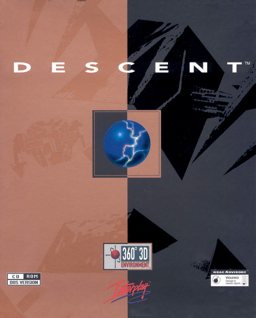
Descent is a first-person shooter (FPS) game developed by Parallax Software and released by Interplay Productions in 1995 for MS-DOS, and later for Macintosh, PlayStation, and RISC OS. It popularized a subgenre of FPS games employing six degrees of freedom and was the first FPS to feature entirely true-3D graphics. The player is cast as a mercenary hired to eliminate the threat of a mysterious extraterrestrial computer virus infecting off-world mining robots. In a series of mines throughout the Solar System, the protagonist pilots a spaceship and must locate and destroy the mine's power reactor and escape before being caught in the mine's self-destruction, defeating opposing robots along the way. Players can play online and compete in either deathmatches or cooperate to take on the robots.
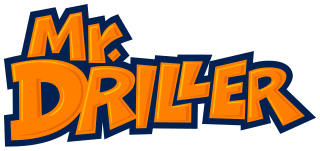
Mr. Driller is a puzzle video game franchise created by Yasuhito Nagaoka and Hideo Yoshizawa for Namco. The eponymous first game was released in 1999 for arcades and several home consoles, such as the PlayStation. Gameplay in the series consists of controlling Susumu Hori, the titular Mr. Driller, or one of his friends and destroying colorful formations of blocks to make it to the bottom of a well. In order to survive, players need to collect air capsules to replenish their depleting oxygen and avoid being crushed by falling blocks.

Descent II is a 1996 first-person shooter game developed by Parallax Software and first published for DOS by Interplay Productions. For the PlayStation, it is known as Descent Maximum. It is the second installment in the Descent video game series and the sequel to Descent. The base of the gameplay remaining the same, the player controls a spaceship from the pilot's perspective and must navigate extrasolar underground mines to locate and destroy their reactors and escape being caught in their self-destructions, while engaging and surviving infected robots, which will attempt to destroy the ship. Unlike other first-person shooters, its six-degrees-of-freedom scheme allows the player to move and rotate in any three-dimensional space and direction.

Forced is a single-player and co-op action role-playing game developed by BetaDwarf, released in October 2013 for Windows, OS X and Linux through the Steam platform as well as Wii U. It is about gladiators fighting for their freedom in a fantasy arena where they are assisted by a spirit-like character called Balfus. Gameplay consists of selecting a weapon class and abilities to combat the various enemies of each arena, while solving puzzles using the help of Balfus. BetaDwarf was formed by a small group of students in 2011, who began developing the game in an unused classroom in Aalborg University – Copenhagen, Denmark. They were removed months later and launched a successful Kickstarter campaign involving an Imgur picture which documented their progress. Forced received moderate to favorable reviews with most critics praising its competitive gameplay and puzzle-system. The game's weak plot, technical glitches and excess difficulty were the negative highlights. It won the Level Up 2013 Intel award and BetaDwarf received the Danish Developer Of The Year (2013) for it.

MDK2 is a 2000 third-person shooter, action-adventure video game developed by BioWare and published by Interplay Entertainment for the Dreamcast, Windows and PlayStation 2. It is a sequel to the 1997 game MDK. First released for the Dreamcast in March 2000, it was later released for Windows in May, with newly selectable difficulty levels and the ability to manually save. In March 2001, a slightly reworked version, featuring level design modifications and gameplay tweaks, was released for the PlayStation 2 as MDK 2: Armageddon. The PC version was released on GOG.com in September 2008, and on Steam in September 2009. A port of the PlayStation 2 version was released for Wii via WiiWare in 2011. Also in 2011, a HD remastered version was released for Windows. Called MDK2 HD, this version features new 3D models, textures, improved lighting, and remastered music, and was released on Beamdog in October, and on Steam in July 2012.

Cave Story, originally released as Dōkutsu Monogatari, is a 2004 Metroidvania platform-adventure game for Microsoft Windows. It was developed over five years by Japanese independent developer Daisuke "Pixel" Amaya in his free time. Cave Story features 2D platform mechanics and is reminiscent of the games Amaya played in his youth, such as Metroid and Castlevania. After its initial self-published release, the game slowly gained popularity on the internet. It received widespread critical acclaim for many polished aspects of its design, such as its compelling characters, setting, story, and gameplay. Cave Story is considered by many as the quintessential indie game because of its one-person development team and influence on the video gaming world.
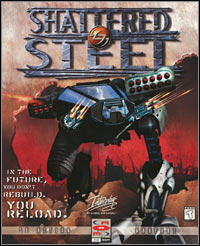
Shattered Steel is a mech simulation game developed by BioWare and published by Interplay Productions for MS-DOS in 1996. It was later ported to Mac OS by now-defunct Logicware. It is notable for the deformable terrain effects, and for being BioWare's first developed game.

Rayman Raving Rabbids is a 2006 party video game developed and published by Ubisoft. The game is a spinoff in the Rayman series. The game consists of 75 minigames. The game was released for the PlayStation 2, Wii, Xbox 360, and Microsoft Windows systems, with a different version released for Game Boy Advance, Nintendo DS and mobile phones. Versions for GameCube, Xbox, PlayStation 3, and PlayStation Portable were planned, but were later cancelled.
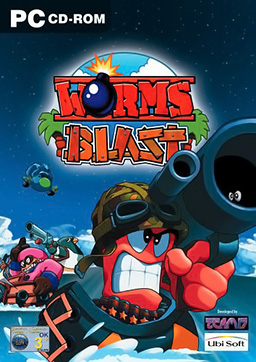
Worms Blast is a puzzle video game for Microsoft Windows, PlayStation 2, GameCube, Game Boy Advance and Mac OS X released in 2002, developed by Team17, and published by Ubi Soft. The Mac version was developed and published by Feral Interactive.

Plättchen Twist 'n' Paint is a video game for the Wii by Austrian video game developer Bplus, who describe the game as a "puzzle shooter". It was the first third party WiiWare title to be announced.
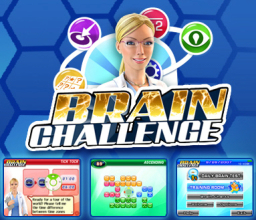
Brain Challenge is a mental exercise video game, featuring "brain exercise puzzles". The game was developed by Gameloft Beijing for mobile phone and iPod and released on September 5, 2007. In 2008 was followed by a Nintendo DS version on January 8, an Xbox Live Arcade release on March 12, and a PlayStation 3 launch on November 27. The N-Gage 2.0 version was released on the day of the service's launch, April 3, 2008. A version for WiiWare was released in autumn 2008 on all three regions. The Wii version also uses Miis for the players profile. OnLive also had launched their new streaming game platform with Brain Challenge on July 27, 2010. The game was released for Mac OS X in January 2011.

Critter Round-Up is a puzzle video game developed by Epicenter Studios and Konami for the Wii. It was released as a WiiWare launch title in Japan on March 25, 2008, North America on May 19, 2008 and in Europe on August 29, 2008. It costs 1,000 Wii Points.

Pirates: The Key of Dreams is a shoot 'em up video game by developers Oxygen Games for WiiWare. A prequel to Oxygen's Nintendo DS game Pirates: Duels on the High Seas, it was released in Europe on July 18, 2008 and in North America on July 21, 2008. It costs 1000 Wii Points and takes up 125 Blocks.

Tetris Party is a puzzle video game by Hudson Soft for WiiWare. An installment of the Tetris series, the game supports the use of Miis and the Wii Balance Board, and features both local and online multiplayer in addition to several single-player modes unique to the game.

Mr. Driller W is a 2009 puzzle video game developed and published for the WiiWare service by Namco Bandai Games. The eighth entry in the Mr. Driller series, gameplay revolves around clearing each level by destroying, or "drilling", large formations of colorful blocks. Players have an oxygen meter that acts as a time limit, and constantly depletes; air is replenished by collecting air capsules, and is depleted further by destroying brown "X" blocks.

And Yet It Moves is a puzzle-platform game developed by independent developer Broken Rules. The game was released for Microsoft Windows, Mac OS X, and Linux on April 2, 2009, and for Wii as a WiiWare title in August 2010. And Yet It Moves was originally designed as a computer science project at the Vienna University of Technology in 2007. When the original prototype won or was nominated for awards at various independent game festivals, the team decided to create a full version of the game.

Spaceball Revolution is a game published and developed by Spanish studio Virtual Toys, that was released on WiiWare in the PAL regions on September 11, 2009 and in North America on September 14, 2009. The DSiWare version was released in North America on February 15, 2010 and the PAL region on April 2, 2010. The PlayStation Network version for the PlayStation Portable was released on February 4, 2010 in Europe and on February 11, 2010 in North America.
Heavy Fire is a series of on-rails arcade shooter video games developed by Polish video game developer Teyon between 2010 and 2013 and Anshar from 2018 to present. The series includes five games: Heavy Fire: Special Operations (2010), Heavy Fire: Black Arms (2011), Heavy Fire: Afghanistan (2011), Heavy Fire: Shattered Spear (2013), and Heavy Fire: Red Shadow (2018).

Cosmo Gang the Puzzle is a 1992 falling block puzzle arcade video game developed and published by Namco worldwide. The third game in its Cosmo Gang series, succeeding that year's Cosmo Gang the Video, players stack groups of blocks and aliens known as Jammers in a vertical-oriented well. The objective is to clear as many objects on the screen before they reach the top of the screen. Blocks are cleared by aligning them into complete horizontal rows, while Jammers are cleared by defeating them with blue-colored spheres.



















